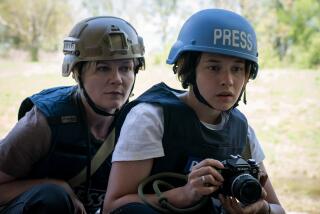Sri Lanka Activists Brave Death Squads in Documenting Human Rights Violations
COLOMBO, Sri Lanka — Two middle-aged Sri Lankan academics who chronicle alleged atrocities by Tamil guerrillas live in constant fear of rebel hit squads.
For Rajan Hoole, K. Sritharan and their wives the last three years have meant constantly moving to evade the wrath of the Liberation Tigers of Tamil Eelam (LTTE), who are fighting for a separate state in the Indian Ocean island’s north and east.
The academics say they are inspired by the memory of a colleague who was shot dead four years ago.
The two, both former mathematics teachers at Jaffna University in northern Sri Lanka, have documented human rights violations by all armed groups in the north, including government forces.
But, since the Jaffna peninsula is controlled by the Tigers, their criticism has focused mostly on rebel actions.
The pair, both in their 40s, are the only Tamil civilians publicly to criticize the Tigers--and the guerrillas’ custom is to punish anyone who disagrees with them.
So both are on the run, keeping their location secret to avoid rebel squads. They live on funds they receive from abroad for their work.
“Our reports have received a certain amount of legitimacy particularly from other human rights groups,” said Hoole.
“I suppose I am not cut out for an underground life. It might not be the right calculation but at some point of time or other I suppose I must come out into the open,” he said.
To do so could be fatal.
Police blamed the Tigers for the killings this year of President Ranasinghe Premadasa and opposition leader Lalith Athulathmudali. The Tigers have denied the charges.
The men’s monitoring work began in 1987 when Indian Peacekeeping Forces (IPKF) were engaged in a bloody battle with the Tigers.
Four Jaffna university teachers, including Hoole and Sritharan, decided to form the University Teachers for Human Rights (UTHR-Jaffna branch) and also write a book on what Hoole described as, the “pretensions” of the Tigers as well as the Indian troops.
“The Broken Palmyrah” (fan palm) was published in 1990 and is a strong indictment of both forces.
Hoole said that just before the book was published, a key member of the UTHR was killed for her crusade against the Tigers. The group was the main suspect.
Rajini Thiranagama was a 35-year-old Tamil lecturer with doctorates in medicine and anatomy and married to a member of the Sinhalese majority group. She was riding her bicycle after class when an unidentified assassin shot her dead.
“I suppose what made us determined to continue was her killing. We felt more responsible, and to drop the work and scatter after one person was killed would have been an insult to the dead person and telling the people that her life had been wasted,” said Hoole.
The IPKF had left by March, 1990, and in July, 1990, the rebels and government troops resumed fighting after 14 months of fruitless peace talks.
“I was overseas on sabbatical for three months and when I returned in July, the war had begun. I got desperate messages in Colombo from Sri (Sritharan) asking me to remain in the capital and not return to Jaffna,” Hoole recalled.
Sritharan continued to collect information, cycling to villages and listening to complaints about Sri Lankan forces and the LTTE.
By September that year when things were getting too dangerous, Sritharan sneaked through an LTTE-cordon encircling the Jaffna peninsula and came to the capital.
Just a few minutes after he left his Jaffna home, LTTE rebels came knocking at the door to take him away for questioning.
The rebels then looked for student associates of the UTHR and detained some of them.
The fourth founding member of the UTHR is Daya Somasunderam, who still lives and teaches in Jaffna but has not been involved in UTHR work for the past few years.
More to Read
Sign up for Essential California
The most important California stories and recommendations in your inbox every morning.
You may occasionally receive promotional content from the Los Angeles Times.










